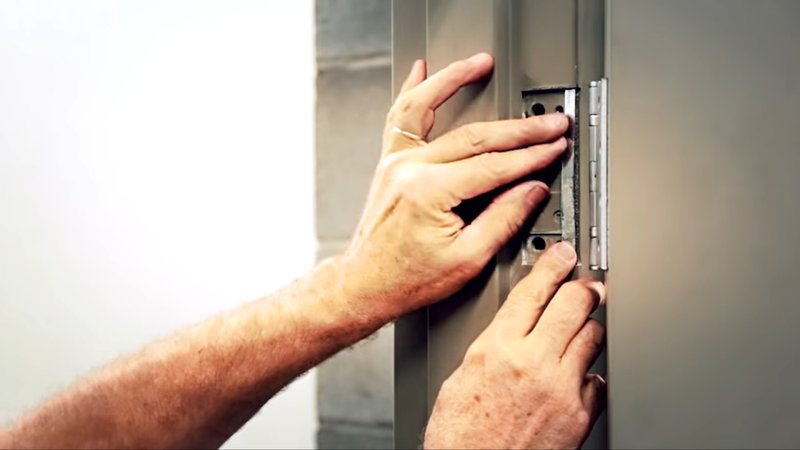
So, what materials should you consider for shimming door hinges? Common options include cardboard, plastic, and wood. Each material has its strengths and weaknesses, and picking the right one can make all the difference in your door’s performance. In this article, we’ll dive into these options to help you decide which is best for your situation.
Understanding Shimming and Its Importance
Shimming is the process of adding material to level, align, or support something. When it comes to door hinges, shimming helps adjust the height or alignment of the door itself. This ensures that it opens and closes smoothly without dragging or sticking.
You might be asking yourself, “Why can’t I just fix the hinge directly?” Well, sometimes hinges are old or misaligned due to wear and tear or a settling foundation. Shimming becomes a quick remedy that doesn’t require a complete hinge replacement. Additionally, it’s a low-cost solution that you can do yourself without professional help.
Proper shimming can also enhance the door’s security. A well-aligned door fits tightly into the frame, making it harder for unwanted guests to break in. So, not only does shimming improve functionality, but it also helps keep your home safe.
Cardboard as a Shim Material
Let’s start with cardboard. You might chuckle at the idea of using something so simple, but cardboard can be a surprisingly effective shim material. It’s lightweight, easy to cut, and can be stacked to achieve the perfect shim thickness.
Using cardboard is great for temporary fixes. If you’re not sure how long you’ll need the shim in place, cardboard lets you experiment without breaking the bank. Just keep in mind that cardboard isn’t the most durable option. Over time—and especially in damp conditions—it can lose its shape or even disintegrate.
A tip for using cardboard is to layer it carefully. Fold or cut the cardboard to the desired thickness, and then stack it behind the hinge plate. This method allows you to make quick adjustments if needed. Honestly, if you’re looking for something to try first without any major commitment, cardboard is worth considering.
Plastic Shims: A Durable Alternative
Now, let’s chat about plastic shims. Unlike cardboard, plastic is weather-resistant and significantly more durable. If you want something that’ll hold up over time, plastic shims are a solid choice. They won’t warp, rot, or lose integrity like cardboard does, which means you can rely on them to keep your door aligned for the long haul.
Plastic shims come in various sizes and thicknesses, making it easy to find the right fit for your door. They often have a tapered design that provides a snug fit while allowing for easy insertion. Plus, many home improvement stores carry them, so they’re pretty accessible.
One downside? Plastic shims can cost a bit more than cardboard, but if longevity is your goal, the investment is worth it. Plus, they come in packs, so you can stock up and keep them handy for future projects.
Wood Shims: Classic and Reliable
Wood shims are another classic option that many people prefer, and for good reason. They offer sturdy support and have a long-standing reputation for reliability. When used correctly, wood can provide a solid foundation for your door hinges, preventing sagging or misalignment.
However, wood does bring some nuances. You’ll want to ensure that the wood shim is cut to the right size and thickness. Improper fitting can lead to unevenness, which will just complicate things further. Additionally, wood shims can be more noticeable aesthetically than plastic or cardboard, especially if they protrude from the hinge area.
On the bright side, wood shims are versatile. You can adjust them by sanding them down or layering multiple pieces for varying thicknesses. This flexibility is great for DIYers who love a hands-on approach to their home improvement tasks.
Comparing Shim Materials: Which One to Choose?
Choosing between cardboard, plastic, and wood shims ultimately comes down to your specific needs and preferences. Here’s a little breakdown to help clarify:
- Cardboard: Best for quick, temporary fixes. Lightweight and easily adjustable, but not durable.
- Plastic: Ideal for a long-term solution. Weather-resistant and robust, though it costs a bit more.
- Wood: Classic sturdy choice, versatile for adjustments. It may require more precision in fitting.
Think about where you live, the conditions your door faces, and how long you plan to keep the shim in place. For instance, if you live in a humid area, plastic or wood might be better suited for the task. If you’re just trying to make a temporary adjustment, cardboard could be just fine.
How to Shim Your Door Hinges: A Step-by-Step Guide
So, now you’re ready to shim your door hinges—great! Here’s a simple guide to help you through the process:
1. Assess the Problem: Open and close the door to see where it’s sticking or not aligning properly. Note which hinge needs adjustment.
2. Choose Your Shim Material: Based on your needs, decide whether you’ll use cardboard, plastic, or wood.
3. Prepare the Shim: Cut your chosen material to size if necessary. If using cardboard, you might need to layer it for the right thickness.
4. Remove the Hinge: Unscrew the hinge from the door frame carefully.
5. Insert the Shim: Place the shim material behind the hinge plate.
6. Reattach the Hinge: Screw the hinge back into place over the shim, making sure everything is snug.
7. Test the Door: Open and close the door again to check if it swings freely. Adjust the shim as necessary.
And that’s it! You’ve shimmed your door hinge like a pro.
Common Problems and Solutions
Even though shimming is a straightforward fix, you might run into some common issues. Here are a few things to watch out for:
– Door Still Sticks: If the door is still giving you trouble, double-check the shim thickness. You may need to add another layer or switch to a more durable material.
– Uneven Alignment: Ensure the shim is evenly placed behind the hinge. If it’s tilted or uneven, it can cause more problems than it solves.
– Hinge Screws Stripped: If your screws are stripped, they might not hold well. You can try inserting larger screws or using wood glue for a better fit.
If after adjustments the door still doesn’t operate smoothly, it might be time to consider hinge replacement or calling a professional.
Wrapping It All Up
Choosing the best material for shimming door hinges can drastically improve how your door functions. Whether you go for cardboard, plastic, or wood, each option brings something unique to the table. Cardboard is perfect for quick fixes, plastic is your reliable long-term solution, and wood offers a classic choice with great adaptability.
Before you start shimming, assess your door’s specific needs and think about how long you want the shim to last. With the right material in hand and a bit of effort, you’ll have your door swinging smoothly in no time. Happy fixing!
